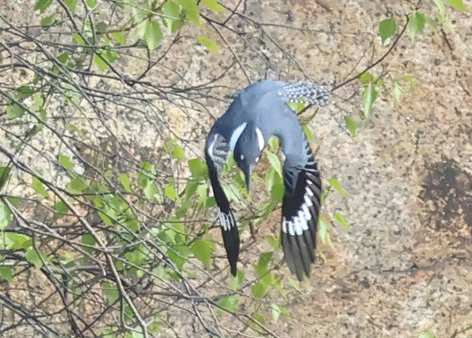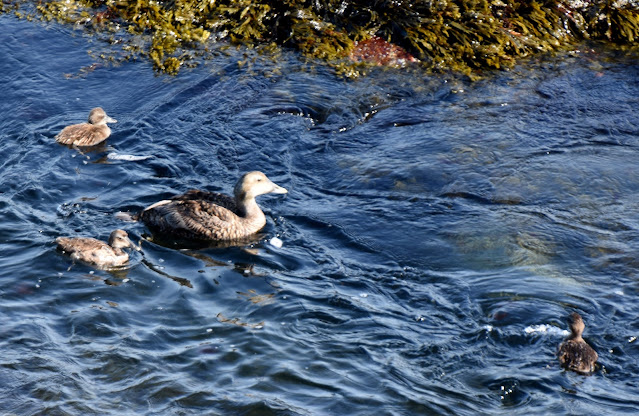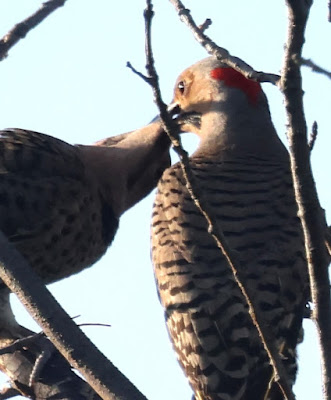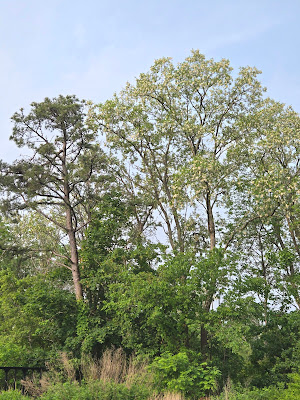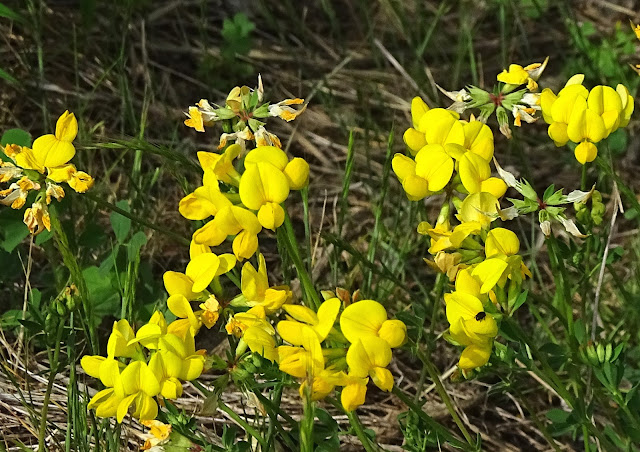KINGFISHER. The name seems mythical, a character from an Arthurian tale, an exceptionalist in a constrained world.
 |
Belted Kingfisher |
A Kingfisher arrives and departs with a disdainful scolding sound, usually near water. You know by its voice that it's operating nearby even when screened by the woods.
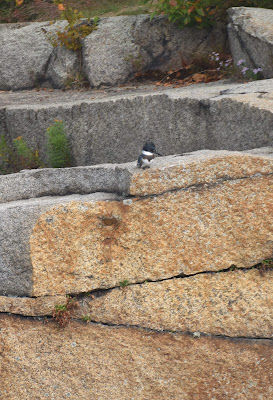 |
The far side of the quarry |
A Kingfisher occasionally perches on the rim of the quarry at Halibut Point. It might secret itself in a tree by one of the small ponds.
 |
| Taking flight |
An unobtrusive observer hears it shriek in the distance, hover, and plunge for a minnow near the water surface. But Kingfishers are notoriously difficult to photograph. They're wary and watchful from their promontories.
 |
Fleeing in diameters |
Kingfishers don't just move. They cross the quarry diametrically, the direct route, to keep as much distance from people as possible. Your long, furtive perimeter reconnoiter to its last position usually ends with an eerie, dismissive scolding as it flies away on detecting the stalker.
 |
| The Devil Bird |
After many near misses I began calling it the Devil Bird. I thought of it taking perverse pleasure at my frustration as it winged away with its unearthly rattle.
 |
| The regal bird |
I became obsessed with the possibility of photographing this elusive malapert. I hid behind a cedar tree while my friend Don went around the quarry to prompt it my way. It landed within a few feet of my blind! A slight movement on my part put the bird to flight squawking furiously. No trophy that day.
Despite, and partly because of its incalcitrant nature; as well as it's improbable physique and lifestyle; my determination to portray it fully developed into a quest.
Underneath it all is the mesmerizing beauty of the bird.
To be continued.
